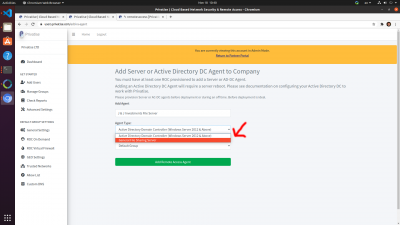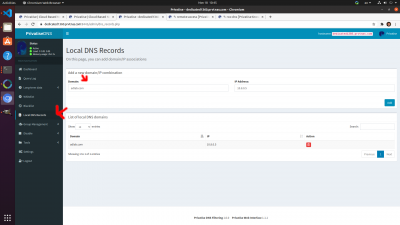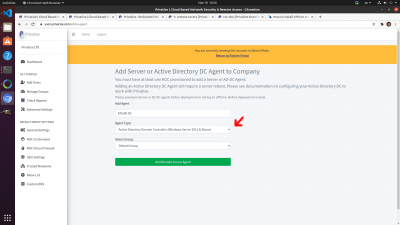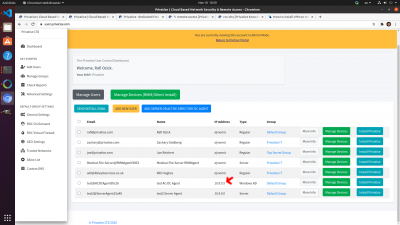This is an old revision of the document!
Using Privatise for Remote Access
One of the most requested features we have seen over the last year has been software based remote access. Remote access using Privatise is easy to deploy, and can replace clunky hardware. It can be used for encrypted RDP, file sharing, and integration with a Windows server DC for connecting remotely to an Active Directory domain.
We're excited to announce that:
1. You can use Privatise to connect remotely via the Privatise VLAN while still allowing your internal office machines to connect over the normal LAN!
2. Privatise supports Windows Server 2012 and above for integration with your Active Directory Domain Controller.
3. You can create custom Fully Qualified Domain Names and attach them to static internal IPs (NAT'S) of the Privatise agents. We know many of you want this to be done automatically. We hear you and this is on our roadmap.
Remote Access is supported by version 2.0.3 on the Windows Agent and above.
Important: When joining an AD Domain, make sure that you have admin access to that client PC in case of any issues or if you have to reset the domain!
Setting up a Remote Access agent for file sharing
Setting up a remote access agent for file sharing is easy to do. Simply follow the following steps:
1. Click on Add Server or Active Directory DC Agent.
2. You will be brought to a page to add either an Active Directory DC Agent or Server.
3. Add a name for the file sharing server agent. This is for your own records and keeping things organized.
4. Choose General File Sharing Server
When you return to Dashboard, you will see the new file sharing server agent with type “Server” with it's IP. You will install this agent on the file sharing server. If you want to connect to this server with a fully qualified domain and not IP, please:
1. Go to Local DNS Records
2. Add a Fully Qualified Domain Name on the left, and static IP of the Privatise agent you want to connect to.
3. Alternatively, you can add an IP address of a general local domain, for example of an office router that is port forwarded to a server.
Connecting to an AC DC Agent
To connect to a Windows Server 2012 and above, you will have to fill the following steps.
1. Make sure routing & remote access is enabled on your Windows Server 2012 and above.
2. Click on Add Server or Active Directory DC Agent.
3. You will be brought to a page to add either an Active Directory DC Agent or Server.
4. Add a name for the Domain Controller agent. This is for your own records and keeping things organised.
5. Choose Active Directory Domain Controller Sharing.
6. You will now see the static IP added to that agent in the main dashboard.
7. Make sure to add your AD Domain under local DNS records in your DNS Dashboard as seen in the instructions above, and connect it to the static IP shown above.
Troubleshooting
Q. Can't Connect to AD Domain Controller
A. Check IPConfig on the AD DC, and make sure that it has the correct Static IP. Make sure that you only used the agent once, as static IPs do not support multiple installs. On the client machine, make sure that the agent you have installed is in the same group as the AD DC.
If both of those are correct, make sure you added the DC FQDN to the DNS dashboard under “Local DNS Records”.
Q. I'm not able to add an AD DC or File Sharing Agent
A. Make sure that the group you want to add the agent to has a ROC. Please see Provisioning a ROC for more information.
Q. Installing an agent broke my file sharing server or DC locally & I had to remove it. What happened?
A. Most likely you did not install the correct agent on the DC or file sharing server. DC & file sharing agents are specifically configured to allow for normal LAN access.




